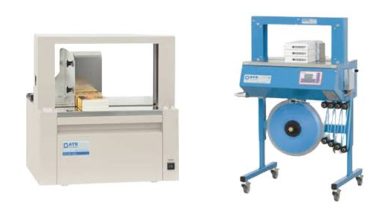High-Risk Payment Processing: All You Need To Know

High-risk payment processing is an area of credit card and e-commerce where a merchant enters into a contract with the payment processor. The merchant will then receive authorization to process transactions through their business, but the company has no access to any customer data. The high risk payment processors often provide additional services, such as fraud prevention tools, which help with security issues and fraud detection.
How to Avoid Becoming a High-Risk Merchant
If you are a high-risk merchant, a few simple steps can help protect your business.
-
Don’t Offer High-Risk Products:
If you sell items with a higher likelihood of being disputed and returned, you should avoid them as much as possible. For example, if you sell cosmetics or clothing online and have had issues with returns and refunds in the past due to damaged or stolen items, it may be best not to carry these products.
-
Don’t Accept Payments From Customers With No Credit History:
It’s essential to use only those payment methods that require a minimum level of personal information (such as checking accounts and credit cards). While this may limit your customer base for some merchants, it’s critical for others whose products or services don’t fit within standard risk categories.
-
Don’t Sell To Customers With A History Of Chargebacks:
If there were any red flags during the application process—for example, if they provided an invalid phone number—it might be best not to take the risk by accepting their order at all.
How To Qualify For A Regular Payment Processing Account
You can qualify for a regular payment processing account if you have these things.
-
A Good History Of Processing Payments:
If your business has been around for at least two years and has processed a minimum of $50,000 in payments during that period, this is a good sign that your business can handle the responsibility of accepting credit cards.
-
A Good Payment Processing History:
If you’re new to accepting credit cards as a form of payment and/or don’t have much experience doing so, it may be better to apply for an easy-to-understand “low-risk” or starter account until you build up some experience with handling credit card transactions and get comfortable with them. You’ll also want to check out our article on what it takes to qualify for low-risk online merchant accounts before applying.
-
A Good Business History:
This includes such things as having an address in an area where people tend not to make fraudulent purchases, having been around more than two years without filing bankruptcy, etc., all signs pointing toward legitimacy in your operation itself.
What’s The Average Chargeback Ratio?
Processors use chargeback ratios to determine whether or not a merchant is a high risk. The average chargeback ratio is 1.5%, but the average chargeback ratio for a high-risk merchant is 3%. A low-risk merchant has an average of 0.5%.
If you have a higher-than-normal chargeback ratio, it could be because you’re selling products or services that are often disputed; this means that customers may think they’ve been scammed when they haven’t been scammed. High-risk merchants should focus on improving their business practices and ensuring customers feel confident in their purchases before getting a higher processing rate from the processor.
Why Would A Merchant Be Considered High-Risk?
Merchants who have a high chargeback ratio are considered high-risk. The chargeback ratio is the number of chargebacks divided by the total number of transactions on a high-risk merchant account, and the processing bank tracks it. It can be calculated in two ways:
- Total number of transaction returns divided by total sales volume over time.
- Total dollar amount associated with transaction return requests divided by overall gross dollar volume for that period.
Why would a merchant be considered high-risk? Chargeback risk can come from many different places, including fraudulent activity or identity theft–if there’s any suspicion that purchases were made fraudulently or without consent from the cardholder due to identity theft, then it’s possible that those purchases may be disputed via the chargeback process; therefore, merchants must adhere to industry best practices when collecting cardholder data and verify its legitimacy.
L
Who Monitors And Enforces Chargeback Ratios?
Chargeback ratios are monitored by each party involved in the payment processing cycle. The payment processor, card networks, and banks monitor chargebacks to ensure that merchants abide by the rules. Merchants will be held accountable for any fees or fines related to chargebacks they receive and must abide by their contract with the payment processor.
When it comes time for a customer to file a chargeback, they do so through their bank, which has an agreement with Visa or MasterCard. In this situation, these two entities act as mediators between the customer and the merchant. If a customer chooses not to hold up their end of this agreement, then they may be responsible for any losses incurred from fraudulent transactions on their account due to their negligence in notifying them sooner than necessary about suspicious activity occurring on their card.
What Are The Most Common Reasons For Getting A Chargeback?
Chargebacks are a big deal for your business. They can cost you a lot of time and money and hurt your reputation with customers, leading to fewer future sales. That’s why it’s important to know what chargebacks are and how you can avoid them. The most common reasons for getting a chargeback include the following:
- Cardholder disputes: The customer claims they didn’t authorize the transaction or never received it as promised.
- Fraudulent transactions: A fraudulent merchant steals their credit card details through malware or phishing attacks and makes fraudulent purchases using their information.
- Cardholder’s refusal to pay: The cardholder refuses to pay because they believe that they did not receive satisfactory goods or services from your shop.
- Merchant error: You’ve made an error processing someone’s payment – e.g., entered the wrong information into the system; overcharged them; undercharged them; etcetera.
Read Also: How To Monetize Your Instagram Account In 2022?
Bottom Line
High-risk payment processing is a serious matter and one that many merchants don’t fully understand. But if you take the time to learn more about high-risk merchant accounts and how they differ from regular ones, you can avoid being put into this category. If you end up with a high-risk account, there are ways to mitigate this problem–like keeping an eye on your chargeback ratio or limiting what types of transactions your business accepts.





